diary
TURN Meeting No.13 Report
2021.3.26
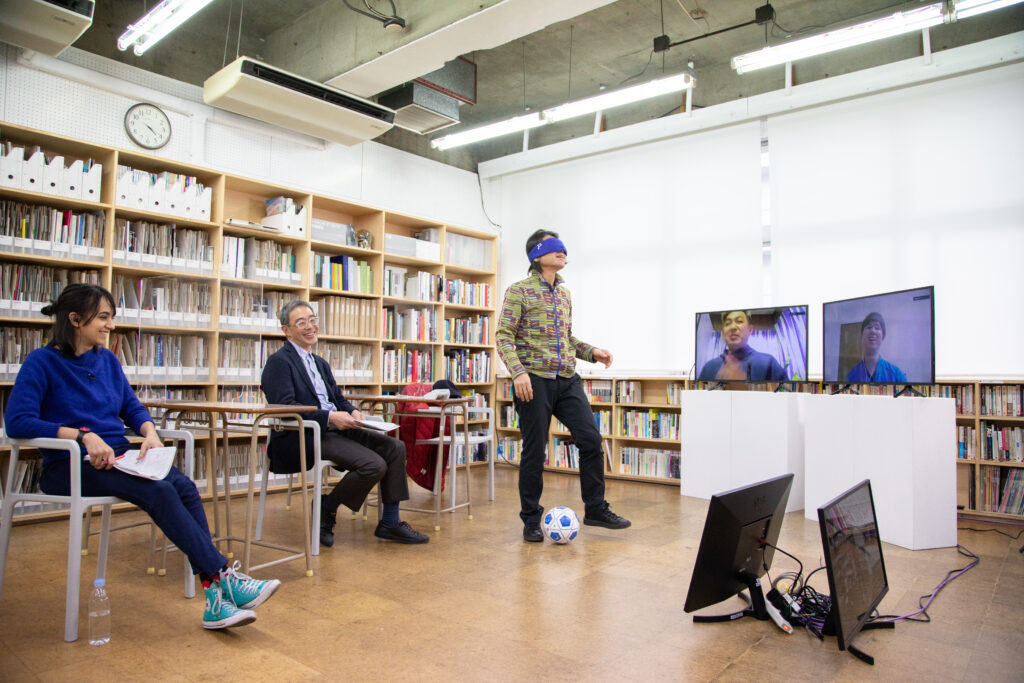
In TURN Meetings, a variety of guests join us to think about possibilities for TURN, an art project which turns “differences” into artistic expression. The 13th meeting was held online on Saturday, March 6, live from STUDIO 302, 3331 Arts Chiyoda. The theme was “Hear, Touch, Imagine: The world as perceived through physical sensation.”
At TURN Meetings in FY2020, we have thought about different ways of perceiving the world and the potential power of tactile sense and vision, inviting guests from a variety of fields who are also deafblind and deaf. For this event, blind soccer players Hiroyuki Komazaki and Kento Torii were invited as guests. They joined TURN supervisor Katsuhiko Hibino, a dedicated soccer fan and a director of the Japan Football Association, for a discussion providing deeper insights into spatial understanding and physical sensation that relies on hearing and tactile senses.
We report on this event, which led to a discussion on how the two seemingly different fields of sport and art share the common “power of imagination.”
■ What connects art and soccer
TURN meetings this year have been streamed online with the aim of improving accessibility so that a variety of viewers can enjoy the content. This meeting likewise provided a variety of “languages” from the streaming room STUDIO 302; barrier-free “katsuben” Kotaro Dan provided voiceover guidance, four sign language interpreters provided signing, and speech-to-text technology displayed what performers / guests / speakers were saying on screen, etc. As for TURN Meeting No. 11 and 12, sign language interpreting entailed a hearing “sign language support” interpreter first converting the performer / speaker’s spoken words into sign language, and then a deaf “sign language navigator” converting them into native sign language again which was relayed to viewers.
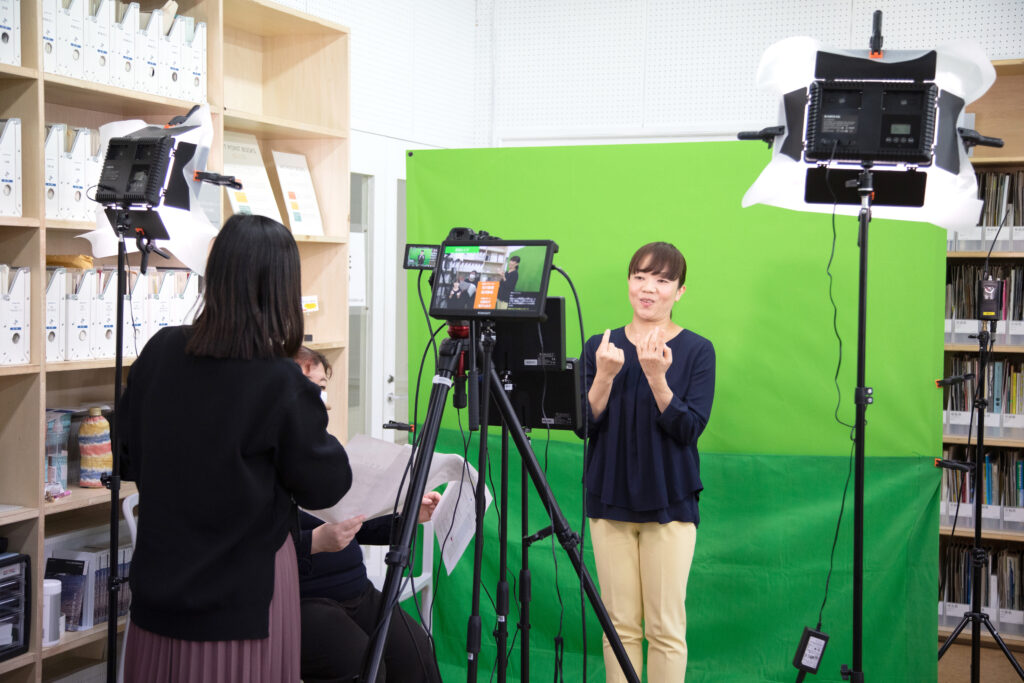
After opening remarks by moderator Laila Cassim, Hibino and TURN Project Director Tsukasa Mori talked about the background to this event.

Soccer fanatic Hibino has worked on soccer-themed artworks and workshops in the past.
One of those was “HIBINO CUP” first held at Art Tower Mito in 2005, before spreading beyond Ibaraki Prefecture. In this workshop, participants first make a soccer ball and a goal using cardboard, and then use them to play a game of soccer. Being made of cardboard, the balls have bumps, and the goals are uneven in shape. But it has become an annual event in the plaza of Art Tower Mito, enjoyed by many participants including children.
Meanwhile in his Match Flag Project, the flags of two competing countries are combined into one piece of material as an emblem of intercultural exchange for soccer fans heading to watch a match. The workshop started out as an initiative for the 2010 South Africa World Cup and is still ongoing.
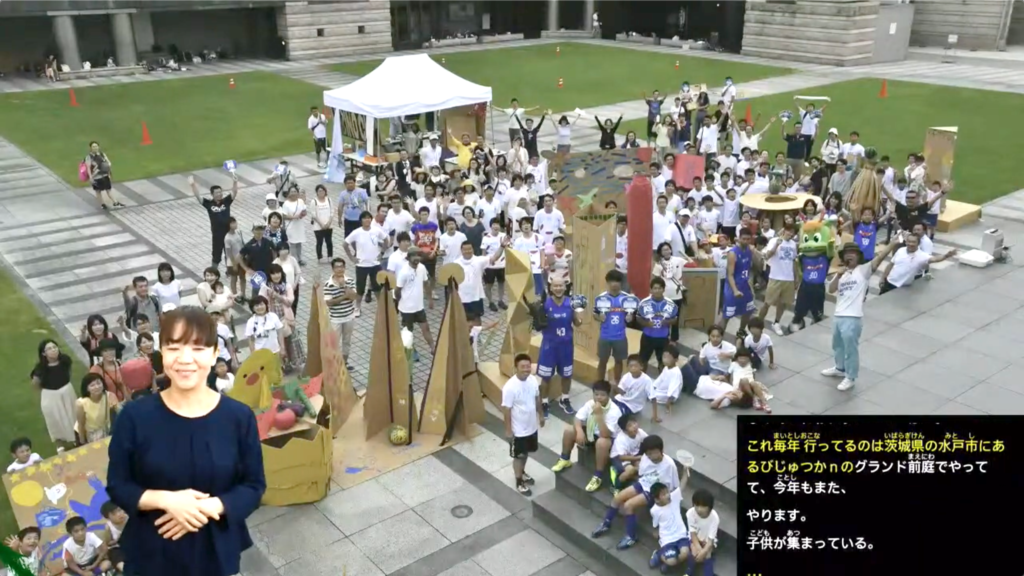
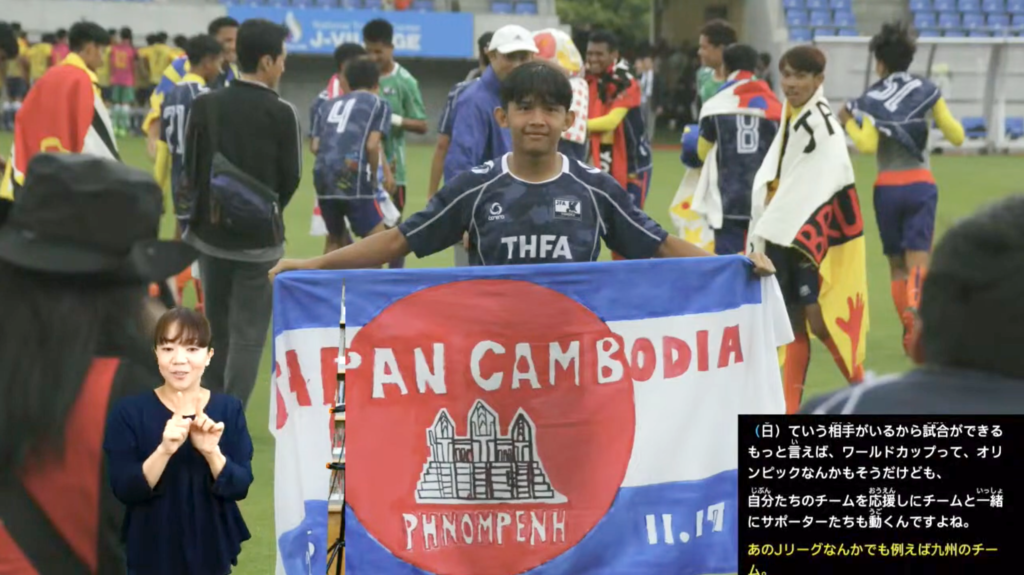
Hibino says he liked physical education and drawing / manual arts at elementary school. Showing enthusiasm for the upcoming discussion, he talked about the relationship between soccer and other sports with art: “With sport, you have an instinct to get the ball to the goal and win. Art also involves an instinct of excitement at colors and shapes. A painting or drawing results from the trajectory of hand movement, and likewise soccer represents or expresses the self through bodily movements. Both are very similar for me.”
Touching upon previous TURN meetings over the year, Mori referred to the fact that the keyword for TURN Meeting No. 11 featuring deafblind guest Atsushi Mori had been “touch,” and for TURN Meeting No. 12 with deaf guests Hideaki Nasu, Monkey Takano and sign language interpreter Yumiko Takashima had been “vision,” and so one of the themes for this meeting would be “hearing.”
■ A picture in the head, drawn via the ear
Going into Part 1, Tomohiro Hasegawa from Arts Council Tokyo acted as interviewer for an introduction to blind soccer together with our two guests, who were joining the meeting remotely.
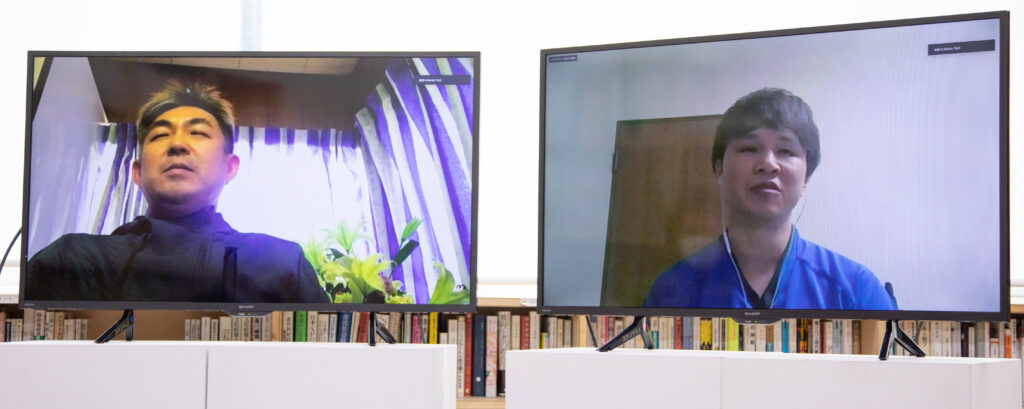
Kento Torii lost his sight at the age of 2. While attending a school for the blind, age11, he encountered blind soccer. At 15 he represented Japan in the World Blind Soccer Championships, and currently plays for blind-soccer team “Free Bird Mejirodai.”
Hiroyuki Komazaki meanwhile contracted retinitis pigmentosa when he was 34. He began playing blind soccer at the age of 45 and currently plays for the team “Saitama T. Wings.” He is at home with a variety of sports, also enjoying blind boxing and blind surfing.
The blind soccer which the two guests play is what kind of sport.
Blind soccer is played in teams of the visually-impaired with the fully and / or partially-sighted players put on blindfolds, and is similar to futsal in terms of its basic five-a-side rule. Players wear blindfolds, and we use a ball that makes a sound when it moves. There’s fencing of about one meter high along the sidelines to keep the ball and the players from going out of play. When a defender goes in for a tackle to get the ball away from an attacking player, they have to shout “Voy”(“I go” in Spanish).
Also, the goalkeeper and the person behind the goal called a guide can be fully-sighted or partially-sighted, and they play without eye coverings. The guide’s job is to vocally inform the players on the pitch of things like the distance and angle to the goal. In this way, hearing is a key element in playing blind soccer.
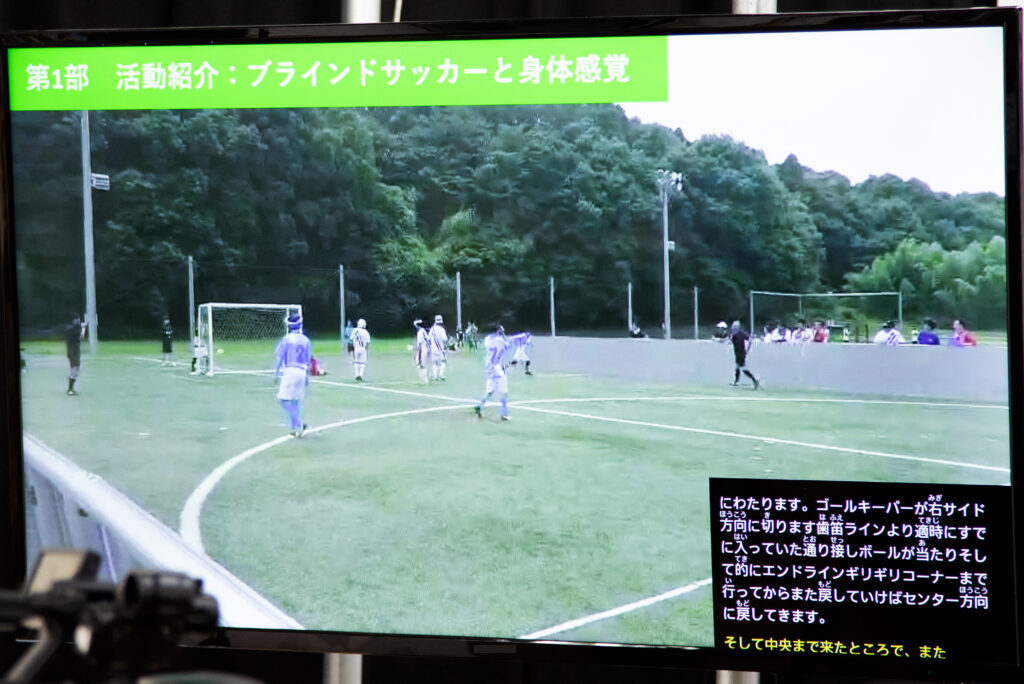
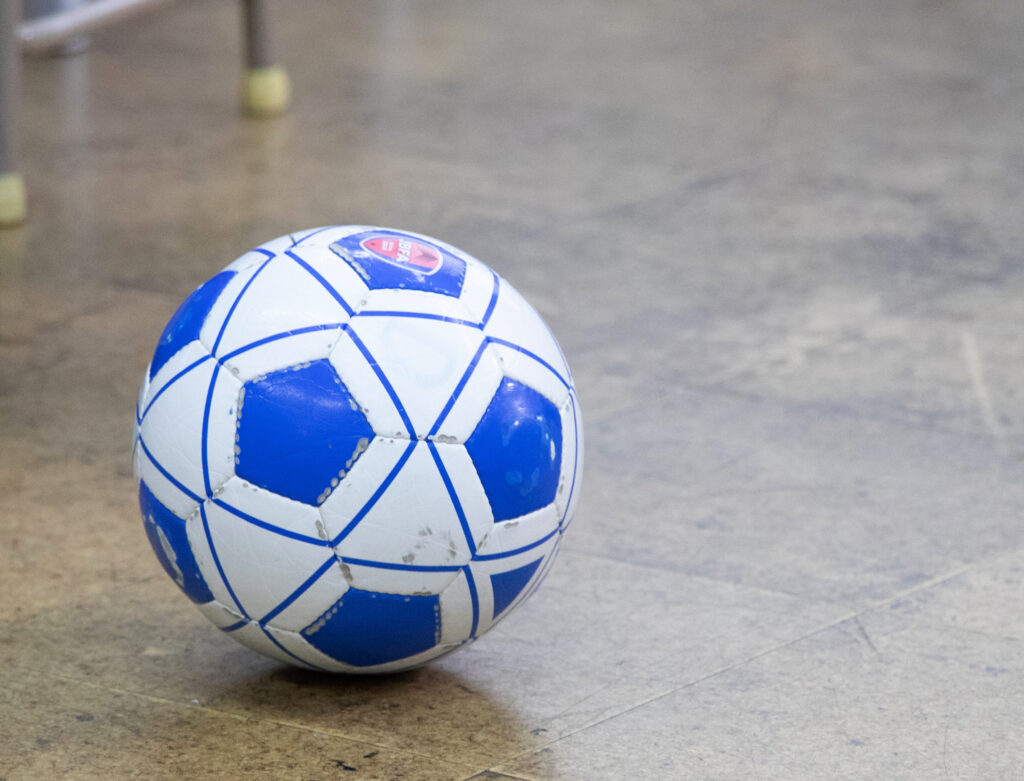
Talking about the appeal of blind soccer, Torii said it was the fact that it was a sport which could not be played without cooperation between visually-impaired and the fully-sighted players. He said he was normally more restricted in his actions than an able-bodied person, but on the pitch, he could put imagination and sudden inspiration to use in order to move freely and express himself.
Interestingly, Torii said that during a match he thinks of the pitch as a sort of “canvas” and plays as if drawing a picture with the “lines” of the ball and his own movements. He added that there were also a variety of sounds like footsteps and voices of opponents and teammates which he listens to carefully, using to draw a picture of the situation in his mind. Then he decides on his move.
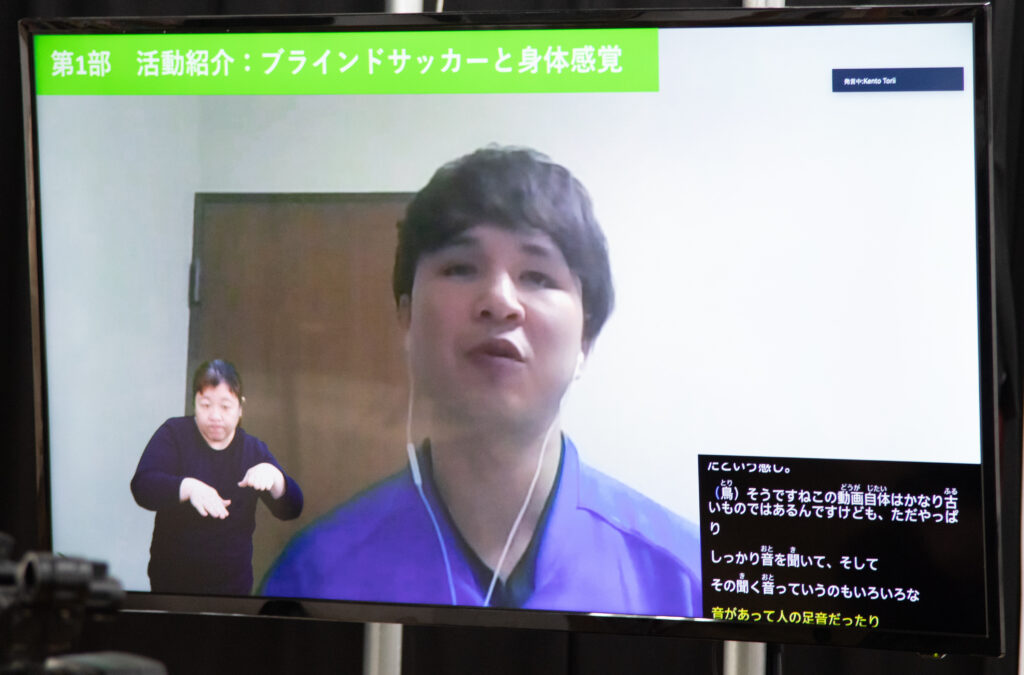
Listening to this, Komazaki said that because there was a time when he himself was able to see, it was difficult for him to draw a clear picture in his head. When he played, he had a sense of something like the clicking of mathematical coordinates, he said. It was clear that even though they are both blind soccer players, each feels something different according to their physical condition and experiences.
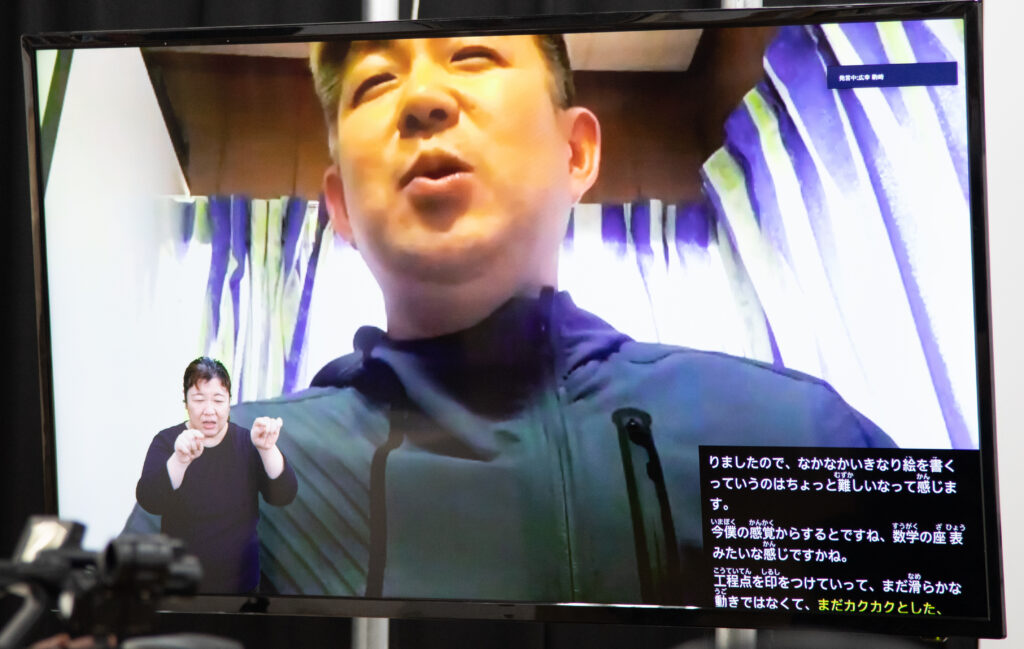
Blind soccer also involves its own unique tactics. For example, once you have made it through the opposing team’s line of defense, if you then return to your own team, defending players hear the receding footfall and mistakenly think it’s a teammate heading to the opponent’s (i.e. your) half. On the day of the event, our two guests provided a commentary explaining this tactic while we watched video footage of a match featuring Torii playing.
During this part, we also watched video footage of Komazaki blind boxing. Blind boxing score based contest, using moves similar to the “kata” of karate. During two minutes of sparring a blindfolded boxer goes for the boxing mitts of a trainer with a neck bell who plays the part of the opponent.
What is interesting about this was Komazaki saying that his perception of sound in blind boxing and blind soccer was different. He added that it is often said that in blind soccer you “listen to sounds with the forehead,” whereas in boxing, if you listen with your forehead you end up facing your opponent straight on. To position himself diagonally from his opponent, he said he imagines that he is listening to the sounds with the toes of his right foot. What he said shakes up the conventional concept of sound being something you hear with the ears.
■ The imagination to understand and connect with each other’s senses
In Part 2, the conversation in Part 1 we expanded upon with Hibino and Mori doing the interviewing.
When asked by Hibino about the pictures in his head when he was playing, Torii said, “I get an image of myself playing, seeing myself playing from above, of myself painting the picture. Does the picture contain color? I don’t think so. What I can say is that the intensity of the lines changes depending on the situation – for example I draw moves I’m really confident about in thick lines. I also get information from wind flow and voices.” Torii goes on to say that because he likes playing soccer using these imaginary pictures, he wants the guide to essentially just keep calling out, rather than giving too much information. He added that the relationship with the guide was very important, and that during practice they go through a process of fine-tuning by exchanging views and comparing notes many times.
Then Komazaki, listening to what Torii was saying, asked him if he got a sense of focusing on a sound he wanted to hear, like tuning in to a radio frequency. Torii replied he himself didn’t really have a sense of focusing on something. “If anything, I pick up more on all the sounds I hear and draw pictures in my head in order to organize them. I don’t just imagine things from above, but also from the side. I think visually-impaired people are always conscious of where their mind is focused on.”
So, what happens when the picture in their heads doesn’t match up with reality? “We get information from the guide when we miss a shot. It’s more than just visualization: I make numerous corrections and additions based on that information,” Torii explained. Komazaki added to this by saying that there were similar disparities in blind boxing as well. “In the case of boxing, the feel of the jab is important, and if you don’t have physical contact with your opponent you can’t throw a good clean punch. So you don’t throw a punch when you decide to, but rather you decide on your next move on the assumption that you are going to receive a blow from your opponent, as you’re continually responding to your opponent,” said Komazaki.
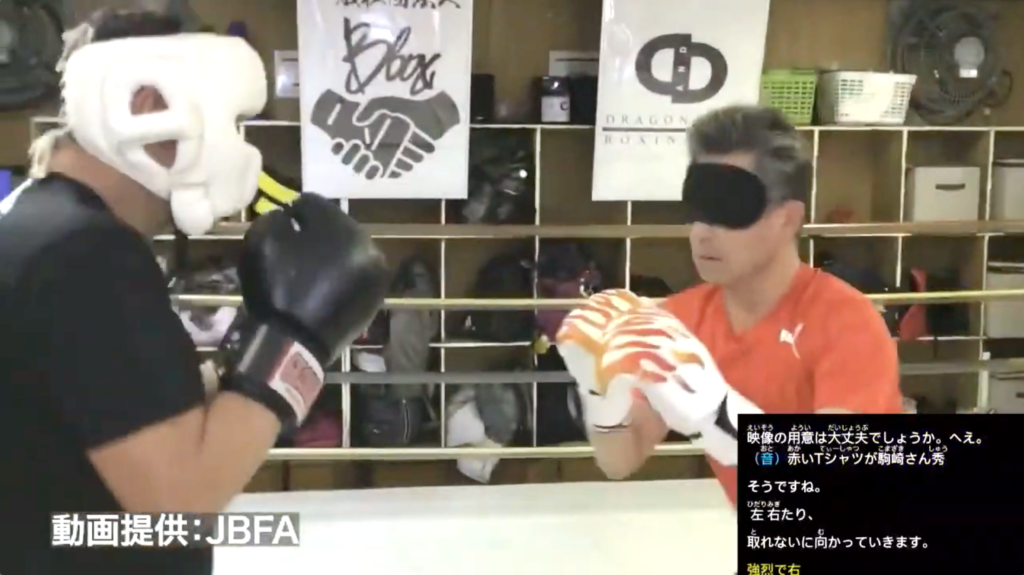
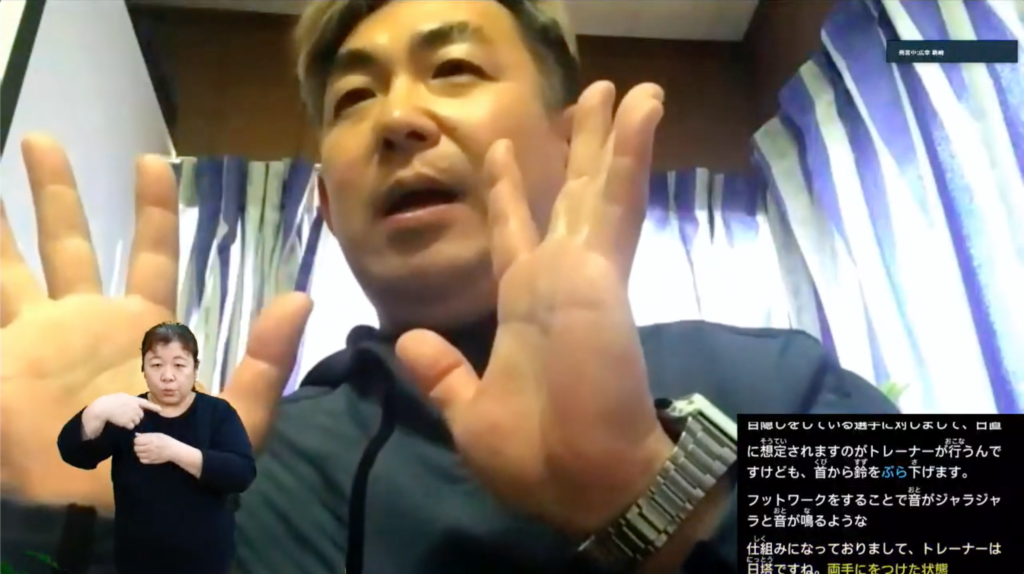
From there, the talk shifted to the topic of sounds in everyday life. Like Hibino says, a lot of sighted people may not usually pay as much attention to the sounds they hear as they do to visual information. Torii however said he found the world of sound extremely interesting. “I don’t remember the time when I could see, but the world of sound is fun. I want sighted people to know more about the world of sound. I think knowing about it makes everyday life more enjoyable.”
People say that there has been a change in the sound of the streets since the coronavirus pandemic.
Komazaki said he’d been noticing more and more that places where music is normally played were quiet. He went on to explain that he can discern light and dark, so it can be a problem walking around the city when usually light place are suddenly dark. Torii said that there was less information for him to rely on during the pandemic, and that the picture in his head “had become a dreary one.”
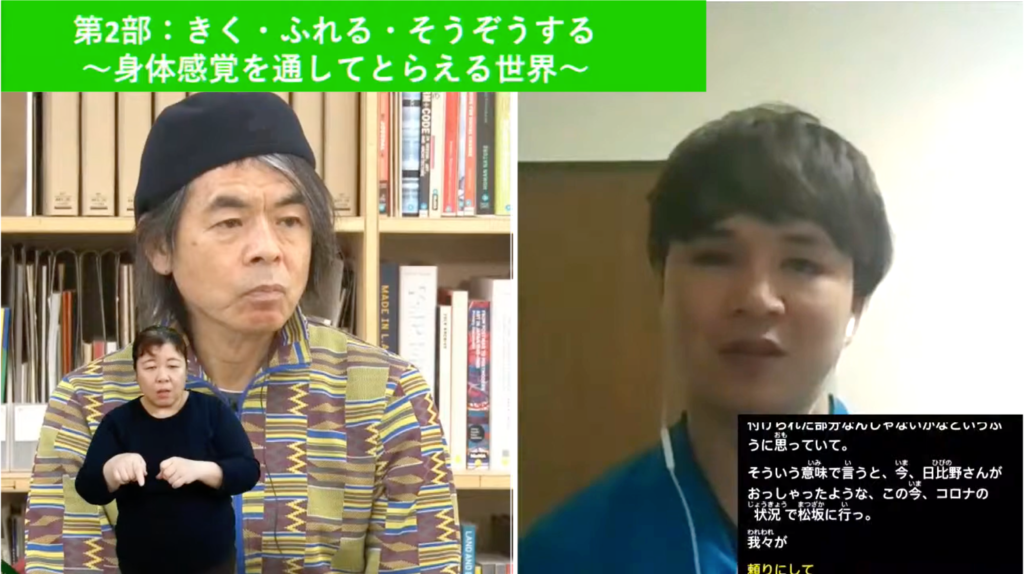
However, regarding the relationship between spatial perception in everyday life and blind soccer, Torii said playing blind soccer had made him good at drawing pictures in his imagination. Even when he is walking around the streets, he creates pictures from aural information processed subconsciously, he said. “I think that’s what I learned from my experience of blind soccer.”
Listening to our two guests talking about all these aural worlds and experiences, Mori said that something guests in TURN meetings throughout the year had in common was that everyone was enjoying making the most of their innate abilities, without a feeling of using them to “supplement” something. Mori said it was exciting to learn about their take on the world.
At one point during the talk Hibino put on an eye mask and rolled a blind soccer ball around the studio. There was a mellow feeling to the on-screen interaction as participants learned about each other’s senses and feelings.
We finished up the event by asking our two guests how they felt about taking part.
Komazaki: I became blind rather than being born blind, so unless I stay aware of what is happening on a subconscious level it is difficult for me to get used to a world I can’t see. In that sense, fully-sighted or able-bodied people might have a sense of distance from blind soccer as a sport, but there is quite a difference between seeing it and actually doing it. I would like everyone to experience it at least once.
Torii: Different people focus on different senses. I can’t see, so I focus on touch and sound, and deaf people focus on seeing and touching. It’s extremely exciting to find out about each other’s senses and learn about the sensibilities of those who are proficient in senses you are not proficient in. And what’s more, in the same way that my senses work differently from Komazaki’s, even though we are both visually-impaired, the able-bodied and the visually-impaired have different sense perception according to the individual. I think mutual understanding of this is very important.
After he’d finished listening, Hibino gave his thoughts. “Because I did soccer myself, it was easy for me to get what you were talking about on a physical level. I’ve made art my medium but listening to today’s discussion I felt that sports also holds great potential.” Mori also gave a positive reaction to the discussion: “Imagination as a sense and a word has a meaning not only as used in a cultural context, but also in the world of sports, with creation occurring in both spheres. It was fantastic to be able to share that concept.”
■ The development of people’s senses as seen during the coronavirus pandemic
After the event had finished, our two guests and Hibino shared some more thoughts on the talk.
Torii said he had been interested in the similarities between blind soccer and art which their conversation had revealed: “I was pleased that Mr. Hibino could understand and relate to the pictures in my head.” He added that he had gotten a sense of the possibilities of TURN Meeting as an opportunity for diverse individuals to gather together and create a single platform.
Meanwhile Komazaki said that he was not good at using his imagination like Torii. “In that sense it hasn’t been easy for me sometimes, but that is why I feel I might be able to stand in the middle between people in a position like Torii and able-bodied people.” On the subject of TURN Meetings he said: “Although the event involves people with different backgrounds, I liked the way everyone interacts without any awkwardness. It would be great if this environment became the norm in society.”
Hibino said that previously when he watched footage of blind soccer, he’d only had vague thoughts about how amazing it was for players to do what they do despite not being able to see. Now however, having had meaningful contact with that world for the first time, with surprise, he could now also understand much of it on a physical level. “You can’t play soccer without having an overview of the situation. I tend to rely on vision, but these two use their spatial understanding through the medium of sound. I think we’ve managed to communicate in a way that goes beyond disability, through our shared sense of sport. For me it has reconfirmed the power of sport and art to create connections that transcend differences.”
Reflecting on TURN meetings held this year which have focused on the sense of hearing, vision and touch, delivered through the new medium of online streaming, Hibino also pointed out that “uncovering people’s untapped abilities is going to be more important going forward.”
Hibino: The present era revolves around vision experienced as onscreen images, and hearing experienced as audio; in other words, senses experienced through information technology and digitalization. But as we’ve heard from our two guests today, people also have the ability to listen with the toes and paint pictures with the ears, abilities that go beyond the one-to-one correspondence between the organ and its function, such as seeing with the eyes, hearing with the ears, and speaking with the mouth. I think this capability is going to be even more important going forward for building a diverse society without people losing their strength to live.
TURN meetings this year have provided the opportunity to revisit the potential for the human senses by talking with a variety of guests. Hibino expresses this in the phrase “abilities not disabilities.” The pandemic has also been a time of learning through trial and error in terms of how to improve accessibility to the TURN initiative by all available means. TURN will continue to take on different challenges from next year onwards, making use of the experiences gained over this year.
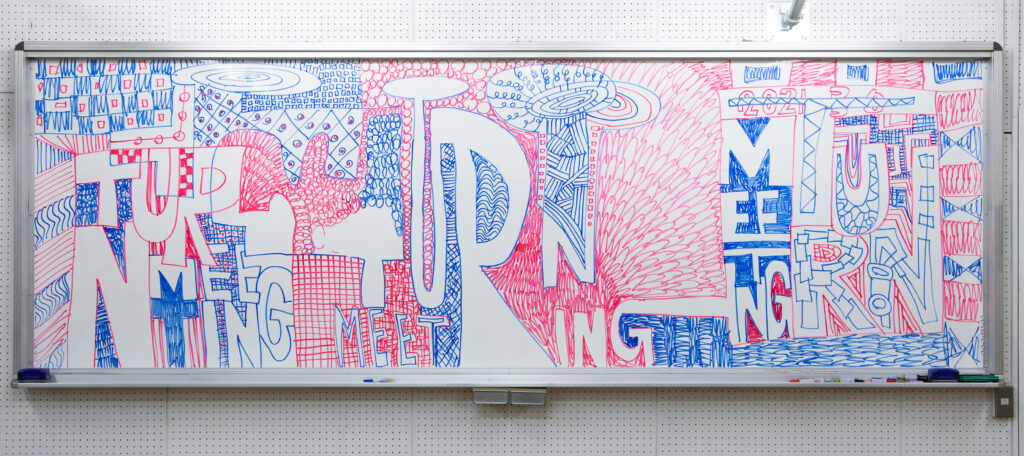
Writer: Tamaki Sugihara
Photo by: Ryuichiro Suzuki
Related Articles